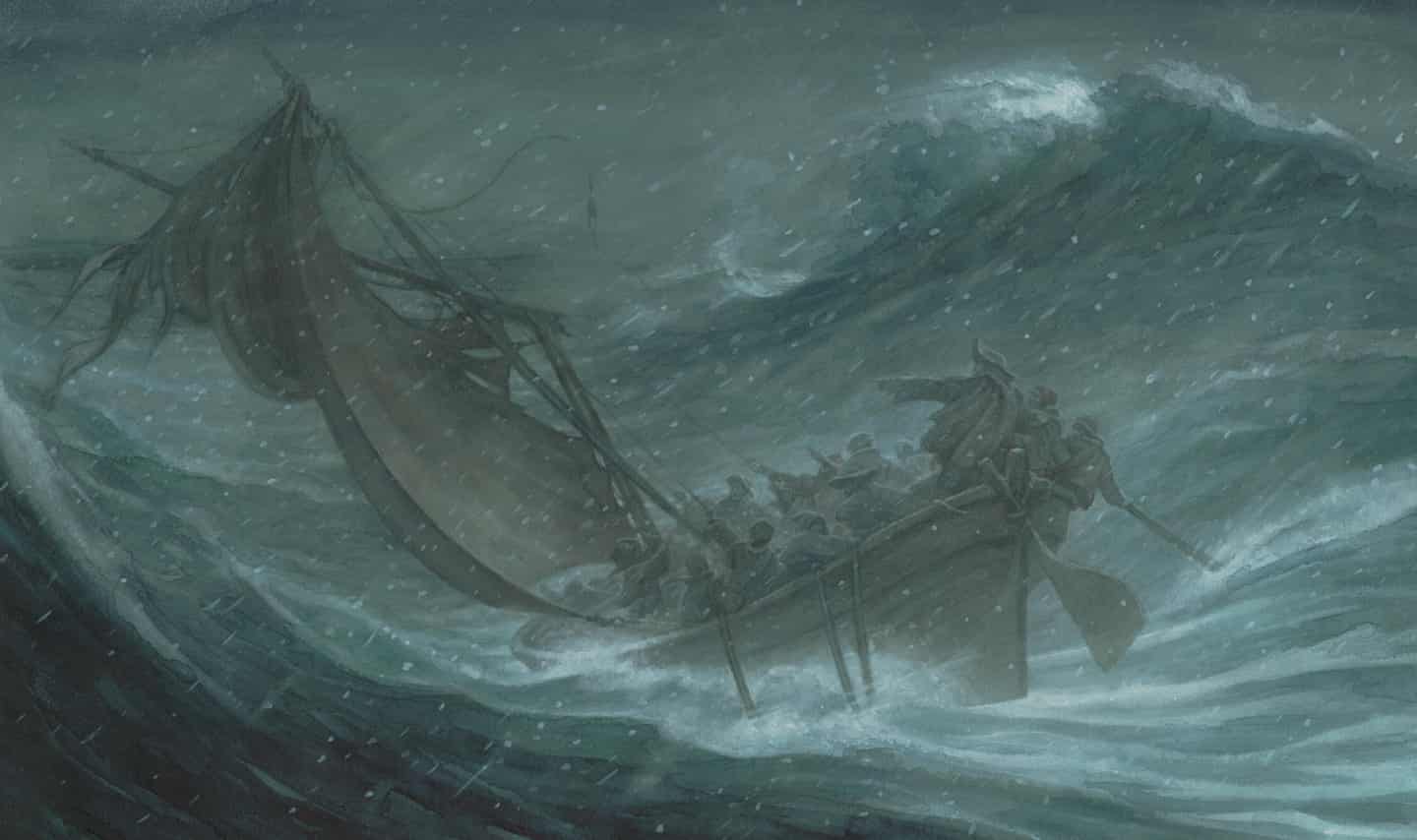

- Contact Us
- Search
-
Mayflower400 partner destinations:
Millions owe their lives to Mayflower passenger who fell overboard
It was a journey into the unknown for those who boarded the Mayflower some 400 years ago to sail to America.
And as if their perilous transatlantic crossing wasn't harrowing enough, imagine how frightened John Howland must have been when he fell overboard as a storm of epic proportions battered the Mayflower?
Remarkably, most of the passengers and crew who left Plymouth in September 1620 survived 66 gruelling days at sea, before finally spotting Cape Cod on the horizon.
By the time the Mayflower arrived off the coast of North America, one passenger, William Butten, had sadly perished during the voyage.
Four more people died while the ship was anchored off Cape Cod, and the harsh winter conditions accounted for nearly half of the remaining passengers and crew before the Pilgrims had even set foot on dry land.

That death toll could have been higher had Howland not survived his own traumatic ordeal. He was almost lost at sea, after being thrown overboard during nightmare sea conditions.
However, he managed to grab hold of a trailing rope, giving the Mayflower crew just enough time to rescue him with a boat-hook.
After living to tell the tale, Howland went on to have an amazing life. A few years after arriving in North America, he married and had 10 children.
Thanks to his courage and will to live, millions of Howland's descendants are alive today - among them notable figures including former US Presidents George Bush and George W Bush, and the Baldwin brothers, Alec, Stephen, Billy and Danny.

A view of Fenstanton from the busway, with the Paxton Pits Nature Reserve in front. Picture: Gene Selkov
Who was John Howland?
The son of Margaret and Henry Howland, John Howland was born in Fenstanton, a parish and village located on the Cambridgeshire border, sometime in the 1590s.
He had two brothers, Henry and Arthur, who later emigrated from England to Marshfield, Massachusetts.
Although his brothers were both Quakers, John himself held to the original faith of the Separatist Pilgrims.
Howland boarded the Mayflower in Plymouth in September 1620 as a manservant of Governor John Carver. In later years, he also acted as Carver's executive assistant and personal secretary.

Time in Plymouth Colony
John Howland was one of the 41 “true” Pilgrims who signed the Mayflower Compact, and in 1624 he married fellow Mayflower passenger Elizabeth Tilley - daughter of John and Joan Tilley.
The couple had 10 children who all survived until adulthood. They were named Desire, John, Hope, Elizabeth, Lydia, Hannah, Joseph, Jabez, Ruth, and Isaac.
In 1626, Howland had enough money (probably thanks to an inheritance via his wife) to help buy out the original joint-stock funders along with William Bradford, William Brewster, Myles Standish, John Alden and Isaac Allerton.
He was elected assistant to the Governor in 1633, 1634 and 1635, and in April 1634 was appointed head of Plymouth's trading post in Kennebec.
Following an incident and the death of a trader, Howland withdrew from public office for six years until becoming deputy for the Plymouth Court.

John Howland's death and legacy
John Howland lived into his eighties — a notable feat for the era — and died in Kingston in 1672, some 14 / 15 years before his wife, Elizabeth, passed away in Swansea, Massachusetts.
He had outlived most of the other male Mayflower passengers, with the exception of George Soule (who died in 1679), John Alden (1687), and John Cooke (1695) Richard More.
Howland is thought to have been laid to rest on Burial Hill in Plymouth, Massachusetts - the same site as several other notable Pilgrims including William Bradford and William Brewster.
His experiences provided the inspiration for 'The Boy Who Fell From The Mayflower (Or John Howland’s Good Fortune)', a beautifully-illustrated book vividly brought to life by writer and illustrator P.J. Lynch.
- Learn more about the passengers of the Mayflower with our interactive guide
Sign up for the latest Mayflower 400 news
You'll be the first to hear the latest Mayflower news, events, and more.
Log In
Register
Mayflower 400 Proudly Supported by our National Sponsors and Funding Partners






